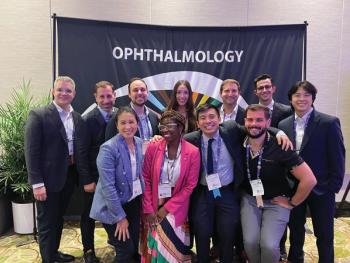
Access, costs of bevacizumab key factors for DME therapy
The efficacy of intravitreal bevacizumab (Avastin, Genentech) for improving vision in patients with center-involving diabetic macular edema (DME) has been demonstrated in several clinical trials.
Reviewed by Sergio Rojas, MD, and Mario Saravia, MD
Dr. RojasThe efficacy of intravitreal bevacizumab (Avastin, Genentech) for improving vision in patients with center-involving diabetic macular edema (DME) has been demonstrated in several clinical trials.
Read the other side of the debate:
Available evidence also shows that the functional gain associated with bevacizumab injections is less than that achieved with aflibercept (Eylea, Regeneron) or ranibizumab (Lucentis, Genentech). Nevertheless, bevacizumab is the best choice for anti-vascular endothelial growth factor (anti-VEGF) treatment of DME taking cost into account, said Sergio Rojas, MD.
Providing the pro position in a debate on the topic, “Bevacizumab is as Good as Ranibizumab and Aflibercept for DME,” Dr. Rojas presented the argument he developed in collaboration with Mario Saravia, MD, Austral University Hospital, Buenos Aires, Argentina.
“Treatment with any of the anti-VEGF agents will on average lead to improved vision,” said Dr. Rojas, private practice, Cuernavaca, Mexico. “The keyword for treating DME, however, is access.
Dr. SaraviaCost and income
“Access is related to cost and income, income is low in many countries throughout the world,” Dr. Rojas added. “The cost of every extra letter gained using an anti-VEGF agent other than bevacizumab is a heavy burden that compromises access.”
Reviewing studies investigating the anti-VEGF agents for the treatment of DME, Dr. Rojas cited the report from the Pan-American Collaborative Retina Study group that showed 51.8% of patients treated with bevacizumab gained 2 or more lines of best corrected visual acuity (BCVA) after 2 years. At 2 years in the BOLT study, patients treated with bevacizumab were 5.1 times more likely to have a 2-line or greater improvement from baseline BCVA compared with the control group treated with macular laser.
Pooled results from the RISE and RIDE studies, the pivotal trials investigating ranibizumab treatment for DME, showed that patients receiving ranibizumab 0.3 mg or 0.5 mg had an average gain of about 12 letters from their baseline visual acuity after 2 years. In the VISTA and VIVID pivotal trials for aflibercept, patients receiving treatment every 4 or every 8 weeks had mean BCVA gains ranging from about 9.5 to 11.5 letters after 2 years.
Reviewing data from the Diabetic Retinopathy Clinical Research Network Protocol T that compared all three anti-VEGF agents head-to-head, Dr. Rojas noted there was a statistically significant difference favoring aflibercept over bevacizumab for greater mean BCVA gain at 2 years. The between-group difference, however, was only 2.8 letters. Patients treated with ranibizumab gained an average of 2.3 more letters compared with the bevacizumab group, but the superiority of ranibizumab was not statistically significant.
“There was no significant difference between treatment groups in the average number of injections administered over 2 years,” Dr. Rojas said
Assuring access
Noting that income is one of the factors determining access to health care, Dr. Rojas presented data from the World Bank to highlight global variation in gross national income per capita and the low level in many countries throughout the world.
Information on the cost of treatment for DME using the different anti-VEGF agents was calculated using data from Protocol T. Those analyses showed that the 2-year costs for bevacizumab, ranibizumab, and aflibercept were $960 (U.S.), $15,550, and $27,750, respectively.
“Considered from another perspective, it would cost $7,200 for every extra letter gained using ranibizumab instead of bevacizumab and $9,500 for every extra letter gained using aflibercept instead of bevacizumab,” Dr. Rojas said.
Read the other side of the debate:
Sergio Rojas, MD
Mario Saravia, MD
This article was adapted from a presentation that Dr. Rojas and Mario Saravia, MD, delivered at the 2017 World Retina Congress. Dr. Rojas is a consultant to Novartis and Bayer. Dr. Saravia has no relevant financial interests to disclose.
Newsletter
Keep your retina practice on the forefront—subscribe for expert analysis and emerging trends in retinal disease management.












































